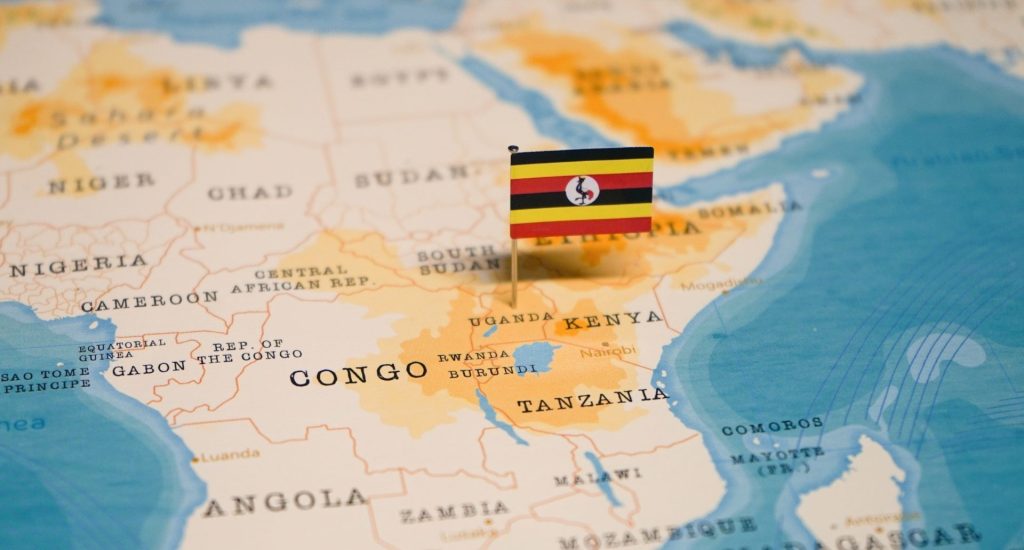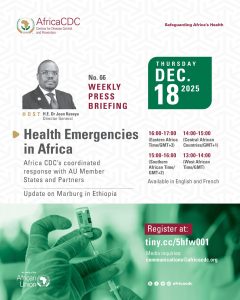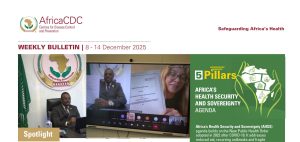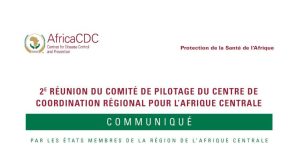Uganda’s borders have always been busy and vulnerable. Over the past decade, Ebola, COVID-19, leptospirosis, Marburg, measles and cholera have all emerged, stretching an already burdened health system. With Mpox still active and the memories of the recent Ebola outbreak fresh, the country is intensifying efforts where it matters most: at the borders. With over 1.24 million travellers screened monthly, Uganda’s Points of Entry are essential for the early detection and prevention of disease outbreaks.
From 19 to 22 May 2025, 40 (forty) Point of Entry health officers from 24 of Uganda’s 66 official border posts gathered in Kampala for an intensive, four-day enhanced cross-border surveillance training. The Ministry of Health led the training in partnership with Africa CDC and other partners, including the World Health Organization Uganda Country Office (WHO-Uganda), United States Centers for Disease Control and Prevention – Uganda Office (U.S. CDC-Uganda), International Organization for Migration – Uganda Mission (IOM-Uganda), Uganda Red Cross Society, East, Central and Southern Africa Health Community (ECSA-HC), and Health Information Systems Program Uganda (HISP Uganda).
The Point of Entry health officers strengthened their ability to map population movement, assess health risks, detect and report outbreaks, use a digital Point of Entry screening tool, and apply core International Health Regulations (2005) capacities. They also refined their skills in cross-border coordination and communication, and in delivering effective risk communication and community engagement – especially critical at both formal and informal crossings where the line between communities and travellers often blurs.
One key innovation during the workshop was the introduction of a new digital reporting tool developed with support from ECSA-HC. While the tool is already being implemented in Rwanda, Uganda will adapt it to its specific context and begin testing it at selected Points of Entry. The aim is to streamline surveillance, accelerate response times, and facilitate more accurate, real-time data sharing across borders, thereby further strengthening coordination and outbreak readiness at the front lines.
Opening the training, Dr Allan Muruta, the Commissioner of Integrated Epidemiology Surveillance and Public Health Emergencies at the Ministry of Health, reminded participants why their work matters. “You are our gatekeepers. Not only must you stop diseases from coming in, but you must also ensure we don’t export them. The country relies on you and will continue to rely on you,” he said, before thanking Africa CDC for, as he put it, “strengthening our capacities not only to detect and respond, but to be self-reliant.”
Mallion Kangume, Africa CDC’s Cross-Border Surveillance Coordinator, reaffirmed the organisation’s commitment to both country ownership and meaningful collaboration. “As Africa CDC, we are firm in our support to countries, but also committed to working together with technical partners to achieve health security for our continent and our countries,” she said. But support, she emphasised, means little if it stops at the tarmac. “If we are strengthening cross-border surveillance, we have to go into the cross-border zones, deep into the villages where real exposure and transmission risks occur.”
A standout success story highlighted is Elegu Point of Entry, a high-traffic crossing at the Uganda–South Sudan border. Screening over 3,000 people daily, the border manages travellers, refugees and highly mobile communities despite limited infrastructure. Patrick Lamot, the Cross-Border Coordinator at Elegu, shared how the team has built strong partnerships across borders. “At Elegu, we share resources and information with our counterparts in South Sudan. That spirit of collaboration has kept us closely connected and responsive,” he explained. A simple WhatsApp group now links officers, clinicians and lab techs on both sides. “We created it to ease the 3 Cs – coordination, collaboration and communication – and it has been vital for TB and HIV follow-up across the border,” he added.
The Elegu team has prioritised risk communication and community engagement with high-risk groups, including truck drivers and commercial sex workers, while also implementing local initiatives such as Keep Elegu Clean, which has helped foster community trust. Despite ongoing challenges, the Elegu Point of Entry is now seen as a model for the country’s practical, people-centred cross-border preparedness.
As the workshop concluded, participants outlined clear next steps to sustain the momentum built over the four days. A national needs assessment will be undertaken to enhance real-time reporting at Points of Entry, with support from districts and implementing partners. The Ministry of Health is also working with the Ministry of Public Service to establish a formal human resource structure for PoEs, while continuing to rely on seconded district staff during the transition.
Further priorities include redistributing medical supplies nearing expiry to nearby health facilities, securing accommodation for port health staff at One Stop Border Posts, and strengthening risk communication and community engagement strategies. These efforts aim to embed the workshop’s gains into national systems, ensuring Uganda’s border health capacities remain strong, responsive and ready for future public health threats.
Uganda’s continued investment in frontline preparedness reflects a clear understanding that border health protects both its people and the wider region. With sustained commitment and coordination, the country is strengthening regional health security and contributing to a more resilient Eastern Africa.







